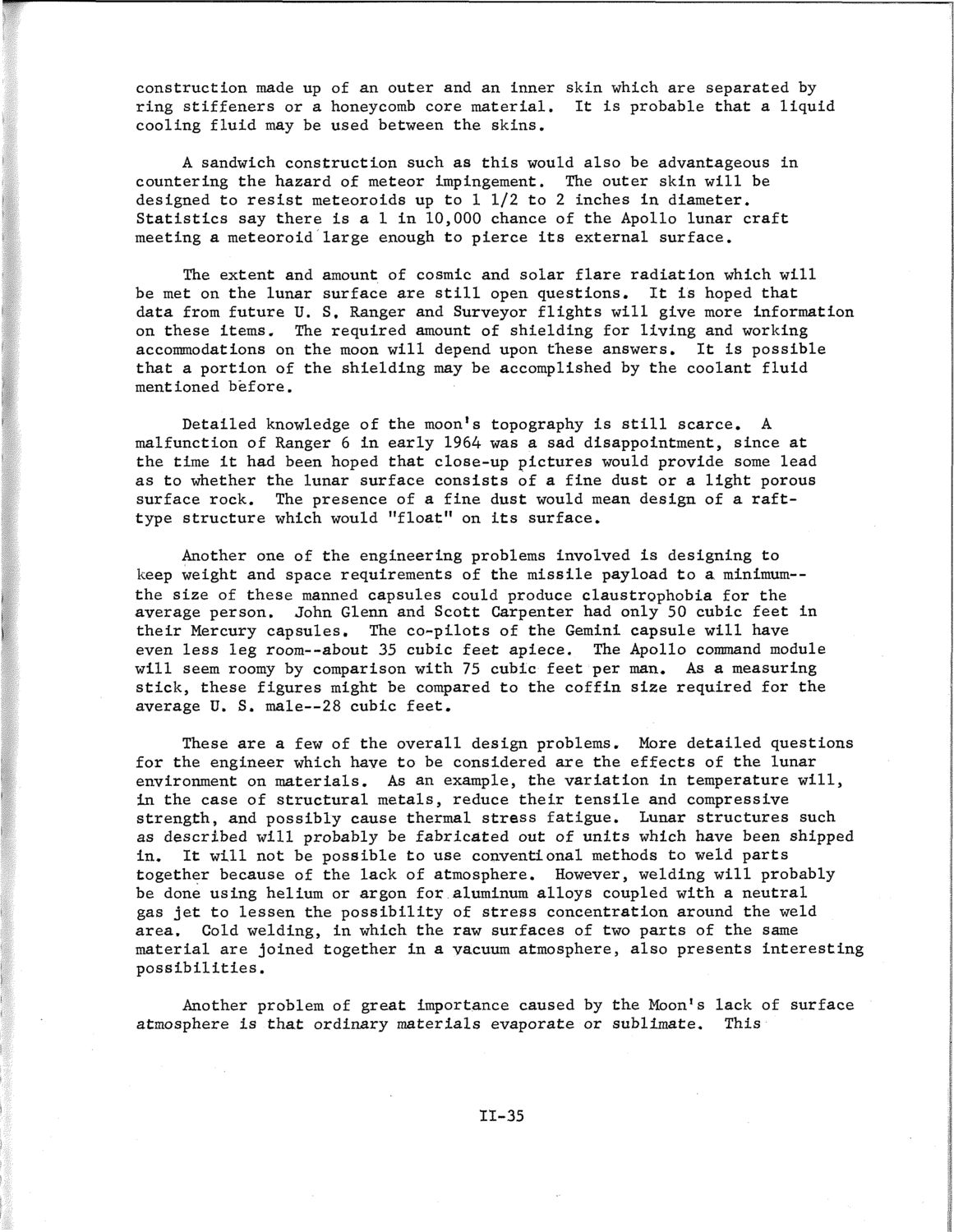| |
| |
Caption: SWE - Proceedings of the First International Conference of Women Engineers and Scientists
This is a reduced-resolution page image for fast online browsing.

EXTRACTED TEXT FROM PAGE:
construction made up of an outer and an inner skin which are separated by ring stiffeners or a honeycomb core material. It is probable that a liquid cooling fluid may be used between the skins. A sandwich construction such as this would also be advantageous in countering the hazard of meteor impingement. The outer skin will be designed to resist meteoroids up to 1 1/2 to 2 inches in diameter. Statistics say there is a 1 in 10,000 chance of the Apollo lunar craft meeting a meteoroid large enough to pierce its external surface. The extent and amount of cosmic and solar flare radiation which will be met on the lunar surface are still open questions. It is hoped that data from future U. S, Ranger and Surveyor flights will give more information on these items. The required amount of shielding for living and working accommodations on the moon will depend upon these answers. It is possible that a portion of the shielding may be accomplished by the coolant fluid mentioned before. Detailed knowledge of the moon's topography is still scarce. A malfunction of Ranger 6 in early 1964 was a sad disappointment, since at the time it had been hoped that close-up pictures would provide some lead as to whether the lunar surface consists of a fine dust or a light porous surface rock. The presence of a fine dust would mean design of a rafttype structure which would "float" on its surface. Another one of the engineering problems involved is designing to keep weight and space requirements of the missile payload to a minimum-the size of these manned capsules could produce claustrophobia for the average person. John Glenn and Scott Carpenter had only 50 cubic feet in their Mercury capsules. The co-pilots of the Gemini capsule will have even less leg room--about 35 cubic feet apiece. The Apollo command module will seem roomy by comparison with 75 cubic feet per man. As a measuring stick, these figures might be compared to the coffin size required for the average U. S. male—28 cubic feet. These are a few of the overall design problems. More detailed questions for the engineer which have to be considered are the effects of the lunar environment on materials. As an example, the variation in temperature will, in the case of structural metals, reduce their tensile and compressive strength, and possibly cause thermal stress fatigue. Lunar structures such as described will probably be fabricated out of units which have been shipped in. It will not be possible to use conventional methods to weld parts together because of the lack of atmosphere. However, welding will probably be done using helium or argon for aluminum alloys coupled with a neutral gas jet to lessen the possibility of stress concentration around the weld area. Cold welding, in which the raw surfaces of two parts of the same material are joined together in a vacuum atmosphere, also presents interesting possibilities. Another problem of great importance caused by the Moon's lack of surface atmosphere is that ordinary materials evaporate or sublimate. This 11-35
| |